Matt Groh
Just some ideas for the final project
Check out the final project here or explore here to see the idea proess.
Saccadde Displays on Bolo Ties
First, what's a saccadde? Well, it's an eye movement. There's a neat trick that can turn one dimensional LED arrays into two dimensional images if you saccadde at just the right timing while the LED lights up.
Cool, but what about wearing the secret message? I figured it might be fun to design for a space cowboy. So, how do we do that? First, never underestimate the bolo tie. It's a thing. Just look at the boss.

This combines electronics design and development with programming with molding and casting.
- Conductive thread
- LEDs
- Software to program images at the right rate
- Molding and cast of the aglet
Game Plan -- How To Do
The molding and casting should be fairly straightforward. This involves designing a new 3d model and repeating what I did during the molding and casting week. The one dimensional array of LEDs is a little trickier. I plan to use chuckplexing , which allows me to control n*(n-1) LEDs with N pins. Ideally, I plan to control 100 LEDs, which means I'll need at least 11 pins. Here's an example of a board that can do way more. I don't yet know how to appropriately chuckplex for a one dimensional array. And I imagine there's a high likelihood I'll get randomly selected today (Dec 5), so, let's chat about it ;). Also, I wanted to discuss what LEDs to use. Do I want an addressable strip or sewable LEDS
. I think the answer is that I want to use conductive thread but I imagine that means I should do this on top of a tie rather than with a bolo tie. Not 100% sure yet. There's one website that talks very briefly about Charlieplexing for a Saccade based display. One risk is the rats nest that Charlieplexing induces. The next risk is LED failure. Once an LED fails, everything gets funky. But I think this is all do-able!Kinetic Art Sculpture (with a motor)
11/14/18 -- Specific Game Plan
I plan to re-create a smaller version of Asinas by Jennifer Townley with different materials based on a 3d version that I found on Grabcad. Here's a nice little explanation for how to set up the blades. And, below that are the next steps for making this happen.
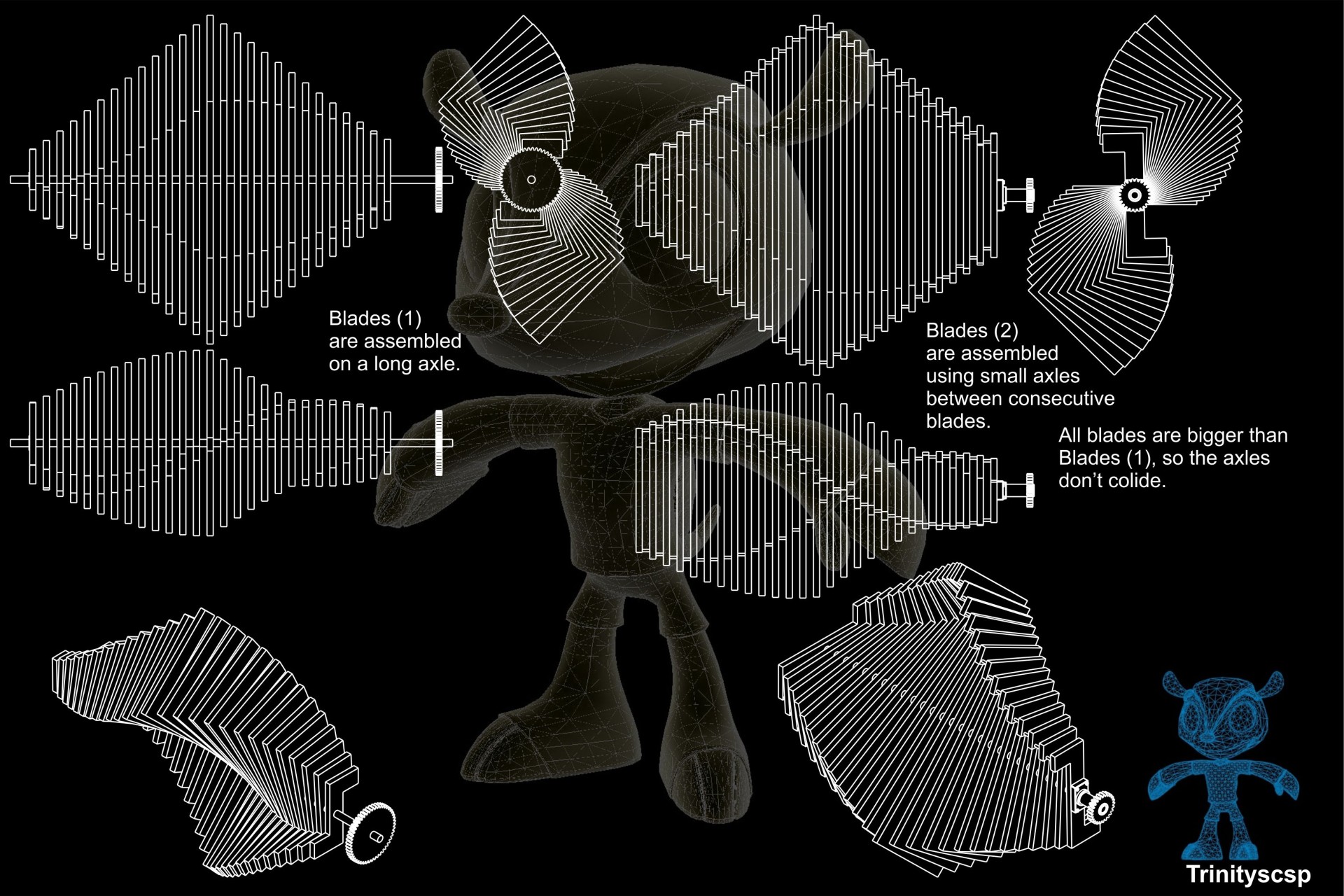
- Render blades in 2 dimensions in Rhino, mill blades with Shopbot
- 3d print the gears
- How should I create the long piece that goes through all the blades?
- Render support structure in 2 dimensions in Rhino, mill support structure components?
- Build a circuit board to control the speed of a motor that spins the system
- Paint the blades
- Put it all together ;)
11/07/18 -- Invisibility to Visibility via Kinetic Wind Sculptures
With a better sense of CNC, electronics design and manufacturing, 3d printing, and molding and casting, my idea for a final class project is evolving. With inspiration from the myth of Horus, I've been rethinking the final project as a representation of a missing object that can only be seen at a particular instant. That's where kinetic wind sculptures. There's a moment when things line up, and I think that would be fun to play with and inspiring. These wind sculptures can involve electronics like lights to make it a chandelier. I'm inspired by Ivan Black's work, which you can see here
Black Ellipse from Ivan Black on Vimeo.
Nebula from Ivan Black on Vimeo.
So, I'd like to focus on creating a spinning chandelier.
Previously: The Escherlier
Here's a project shooting for that sweet spot between 12 weeks of work and defying the laws of physics.
The Escherlier is a portmanteau of M.C. Escher, one of the worlds most famous graphic artists, and Chandelier, an elegant lighting fixture. The idea is to build an Escher-like "Relativity" staircase in three dimensions with a light (or set of lights) in the center. Ideally, I'd include an interactive feature enabled by video and computer vision (if time allows!). What's inspiring to me about Relativity is its ability to simultaneously communicate cheerfulness through the painting's natural, people oriented setting and reflection through the though-provoking surrealism of multiple gravity wells. I have a feeling that the Escherlier could add nice ambiance above a dining table, provoke open perspectives, and possibly make this world a little brighter.
Updates
10/03/18 -- Designing for Success
Okay, it's quite hard to 3D model an Escher staircase. It's not impossible, but it's not the smartest way to solve this problem. I chatted with Rebecca, the designer of the Opera of the Future staircase on the 3rd floor of the Media Lab, and she shared that 3D modeling was quite difficult while building a 3D real-life object out of a press-kit was not only fun but useful in enabling ideas to emerge throughout the construction process. We talked about the neat properties of light refracting through different translucent material like plastics and water. So, now I'm trying to figure out what the right plastic material to build a press-fit staircase should be. Also, the staircase is meant to hang, so I'm playing around with cardboard to figure out what the right structural engineering should be, but I need to first figure out the structural component from where the cardboard hangs. I'm thinking of concentric circles that look similar to this chandelier.
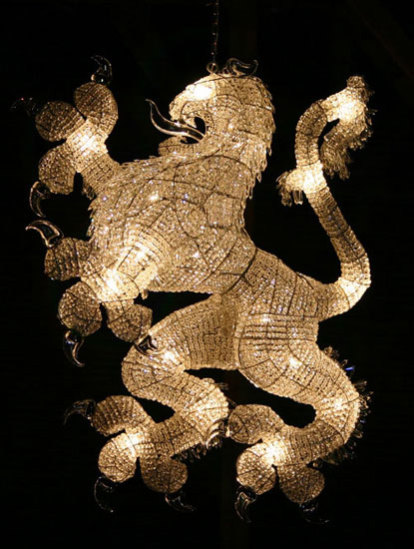
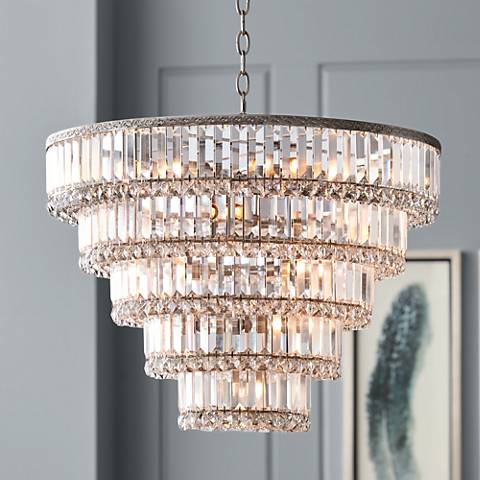
September Updates
For my final project, I'd love to build a thing that defies the laws of physics. But... I think I'll need more than 12 weeks for that, so I'm scoping it down to something that appears to defy our notions of reality. Inspired by Escher's Relativity Staircase, I want to construct a chandelier that appears to defy gravity. Beyond the construction of the Escherlier, I want to embed the chandelier with magical powers. And by magic, I mean sufficiently advanced technology. One might hazard that sufficiently advanced technology is indistinguishable from magic. I want to embed a wide-eye lens into the chandelier, alter the lighting based on the mood below the chandelier, and have a little fun at the dinner table with AI.
Here's a picture of Escher's Relativity Staircase
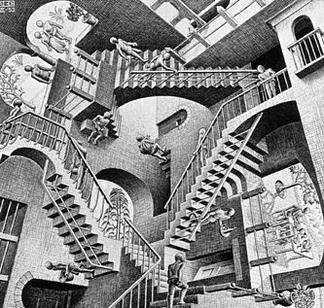
And here's my first ever mock up in Rhino of multiple gravity abiding staircases.
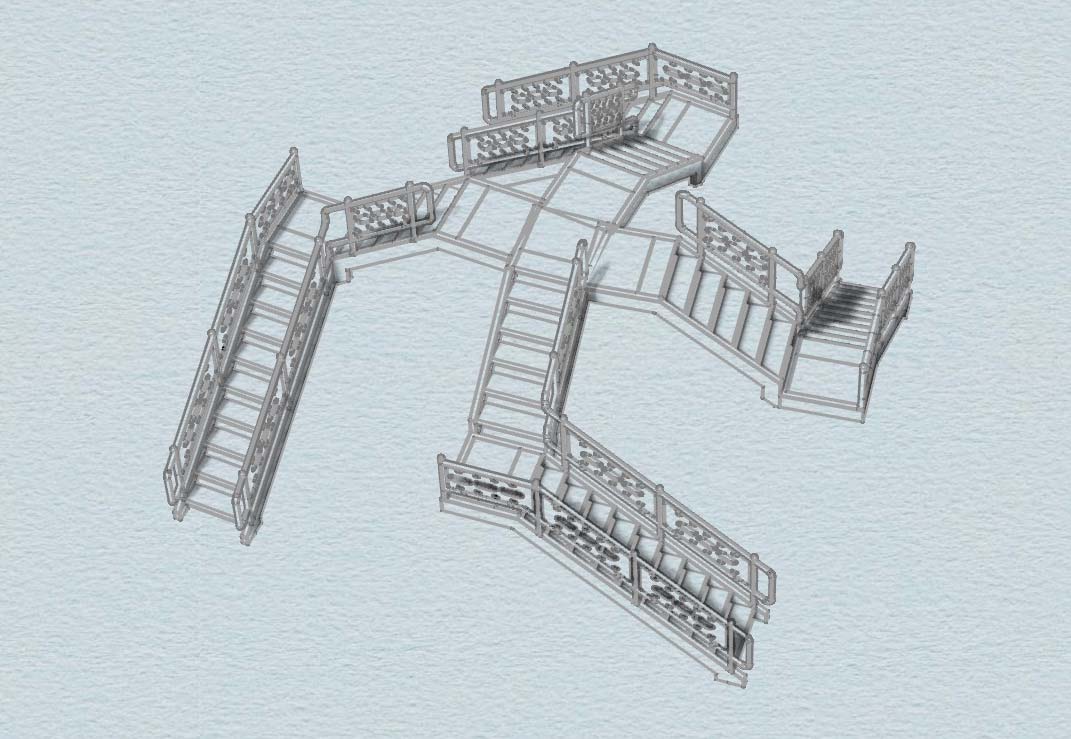
And here's an Eschercase in Rhino. The first image is an artistic rendition and the second is intened to be a realistic rendition.

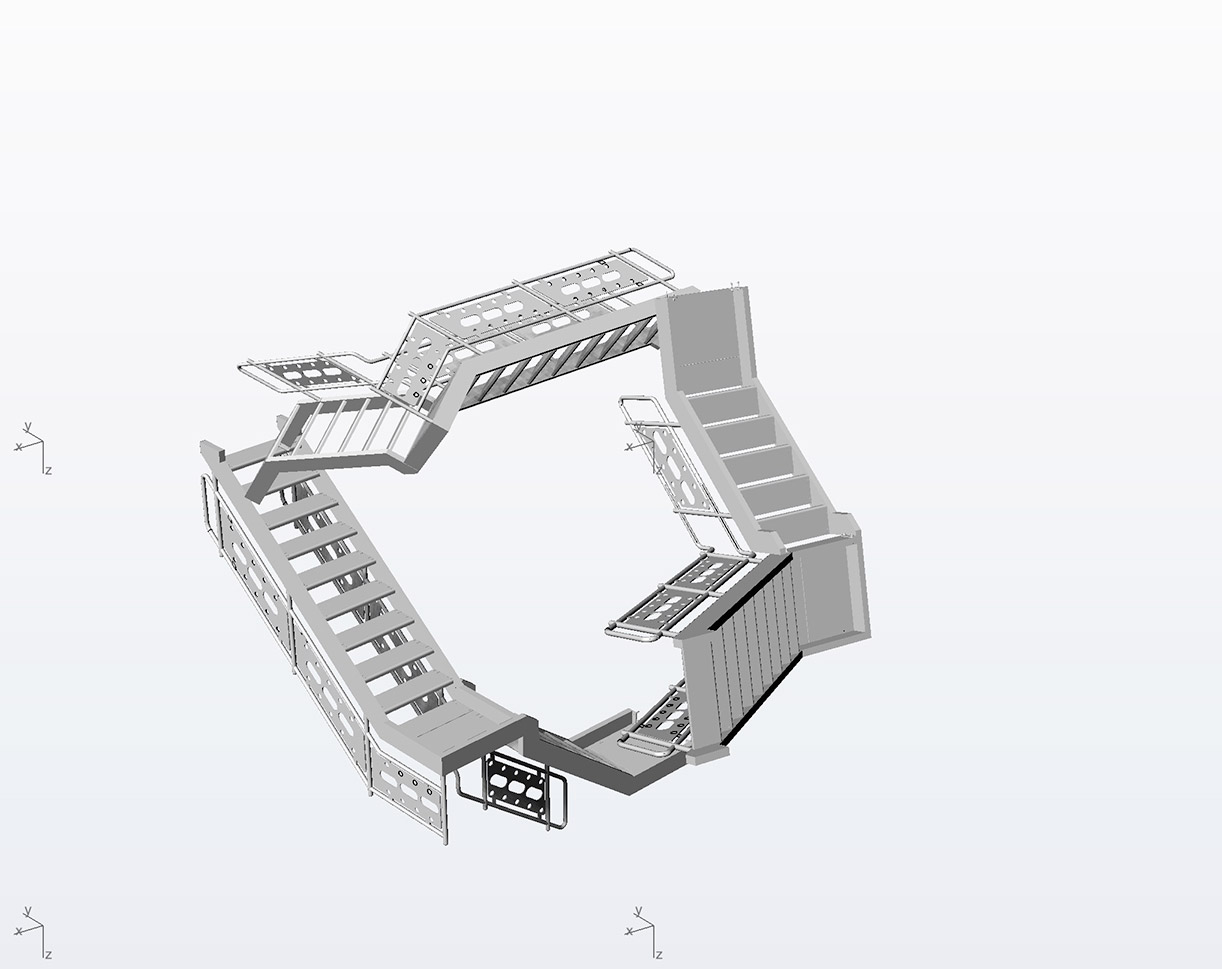
And here's an Eschercase in Rhino. The first image is an artistic rendition and the second is intened to be a realistic rendition. There's lots of room for improvement. The aesthetics are off from what I'm intending. And more importantly, the staircases are not approriately linked in 3 dimensional space. Check out the superiore, frontale, and destra views below, which show how these staircases are quite separate in 3d space. I just happened to get an okay angle in the Eschercase models above.

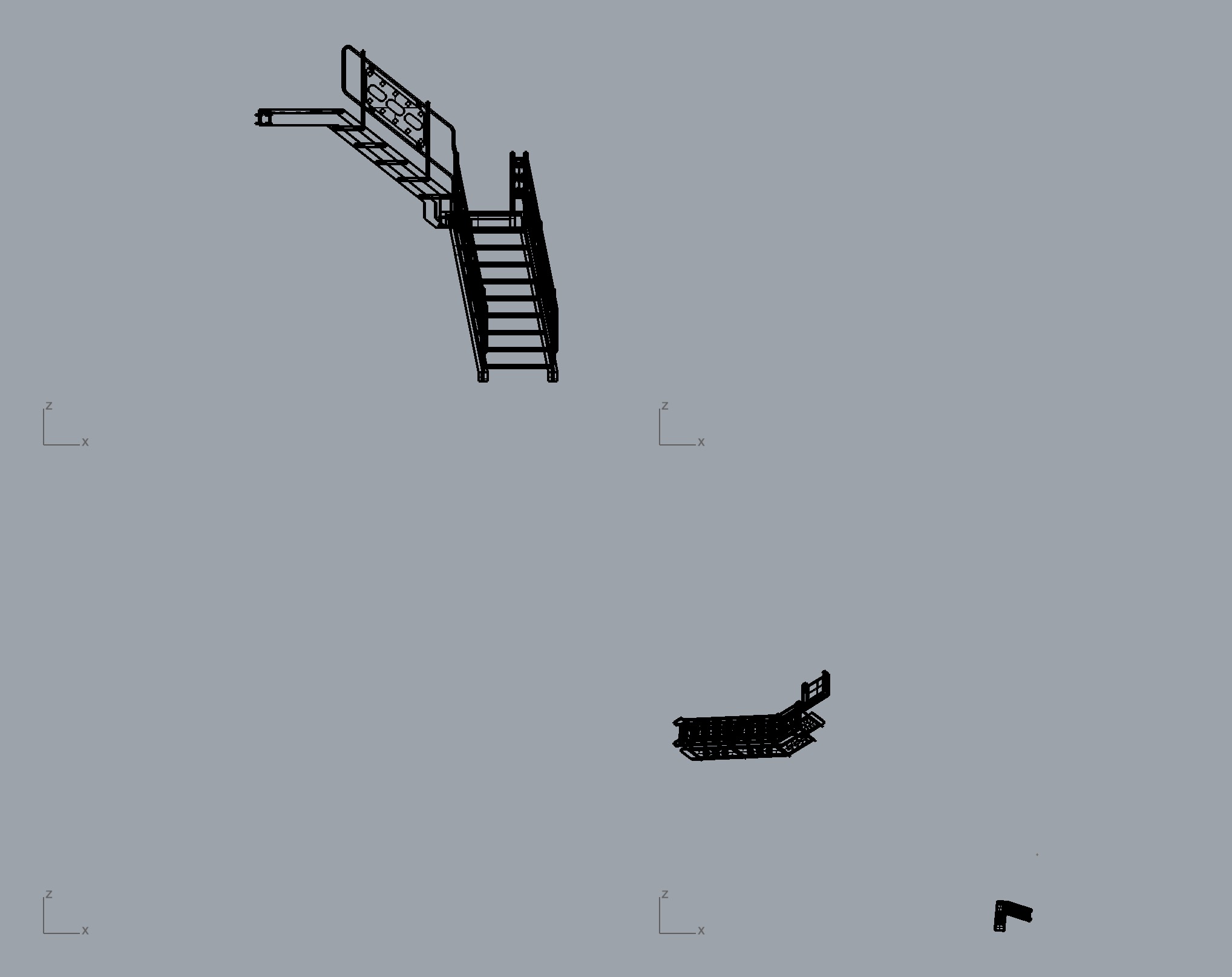
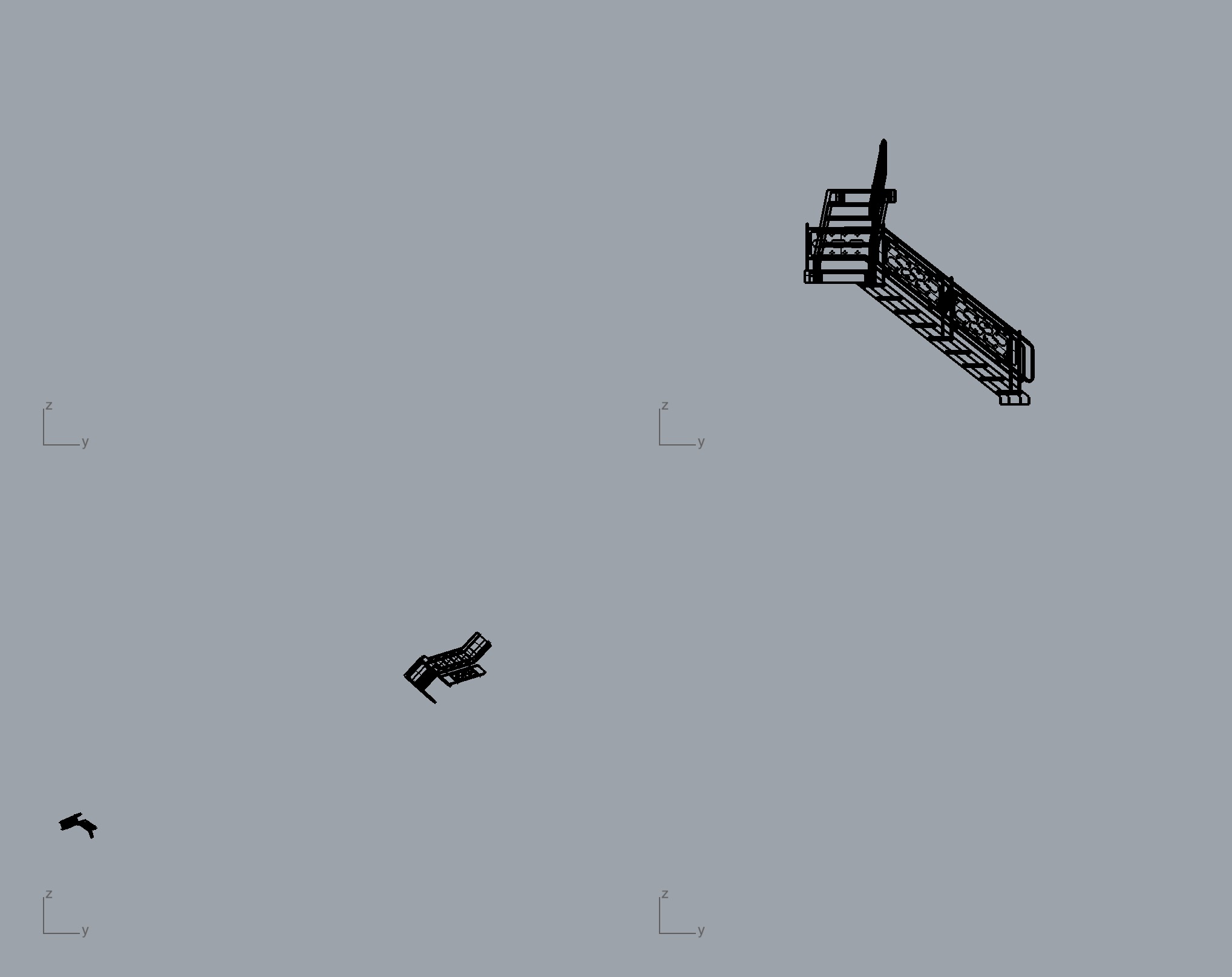
So, there's more to come! And this is the initial idea anyways. They say the best laid plans of mice and men... now it's time for the journey.